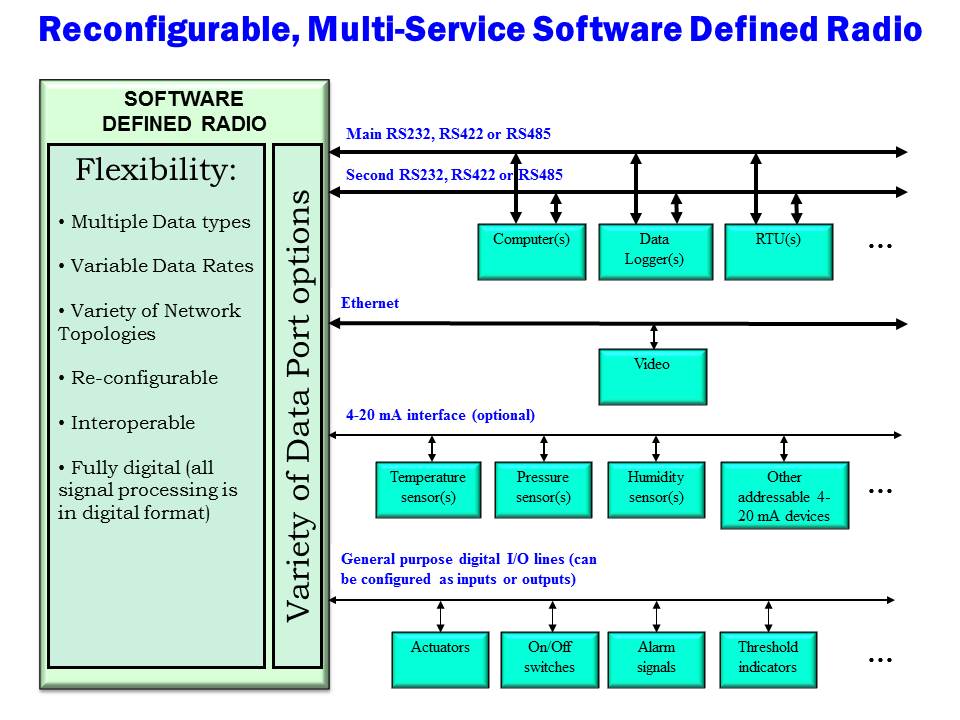July 2013, Vol. 240 No. 7
TechNotes
Software Defined Radio For Pipelines

From lunar excursions to shopping at the local store, wireless radio communications have been popping up everywhere. For more than a quarter century, radio communications have been successfully replacing traditional hardwired communications in a variety of Supervisory Control and Data Acquisition (SCADA) applications.
The oil and gas industry is no exception. Long gone should be the days of manual data collection, manual equipment monitoring and manual processing and control. Wireless technologies offer users a variety of possibilities for replacing and/or expanding existing hardwired communications, managing pipelines, tracking assets, collecting remote data and serving as an overall plant communications solution.
One of the challenges users face after making the decision to move to a wireless solution is choosing a system that is best suited to their specific needs. The obvious network characteristics — such as network topology, system throughput, data interfaces and cost of ownership — are all important factors. However, there is another characteristic — which is often overlooked — system re-configurability.
The Issue
The majority of the radio solutions in the marketplace today are hardware-based. Oftentimes, these radios allow for minimal re-configurability and fine tuning. For instance, the user might be able to select between a Point-to-Point (PtP) and a Point-to-Multipoint (PtM) set up or adjust RF packet sizes. However, for the most part, hardware-based wireless transceivers cannot be optimized to accommodate for transfers of different data types, different data speeds, or multiple data interfaces. As a result, once installed, the parameters and functionality of the entire system are “locked” and not easily upgradable without incurring additional costs and the inconvenience of updating each individual transceiver.
The Solution
Software Defined Radio (SDR) technology provides an ideal platform to address the constraints presented by traditional hardware-based radios. What exactly is a “Software Defined Radio”? The SDR Forum, working in collaboration with the Institute of Electrical and Electronic Engineers (IEEE) P1900.1 group, describes a Software Defined Radio as “Radio in which some or all of the physical layer functions are software defined.”
In brief, an SDR is a combination of highly modifiable hardware and controlling software that are tightly coupled with each other to form a sophisticated radio frequency device. An SDR processes all incoming and outgoing RF signals in digital form and has very little, if any, analog hardware. Instead, the SDR utilizes technologies such as field programmable gate arrays (FPGA), Analog-to-Digital (ADCs) and Digital-to-Analog Converters (DACs) and digital signal processors (DSPs) as its core building blocks.
Unlike legacy radios, SDR technology truly defines wireless communications with software. SDRs allow for unprecedented levels of network customization: 1) the network throughput can be widely varied without hardware upgrades; 2) the modulation type used by the system can be adjusted to virtually eliminate any interference with co-existing networks even if two networks are using the exact same frequency channels; 3) data types supported by the network can be re-defined even after the system has been deployed (for example, IO lines can be added and an Ethernet interface can be enabled).
Adding new features simply means a software upgrade of the existing radios even if the addition requires substantially redefined RF traffic. The network is no longer “locked” when it comes to future growth, changing technologies, upgrades and enhancements.
Moreover, SDRs can be used as add-ons to expand or enhance an existing system or as complete replacements for obsolete transceivers.
Since the SDR is fully-digital, the transceivers can be programmed to be back-compatible with the existing wireless infrastructure at the level of RF communications. This means that an existing system can be expanded for future growth with minimal investment and without the need to replace the existing hardware all at once.
Once installed, a wireless system should be able to accommodate future growth. As production and product throughput increases, so do the demands on the communication links. The ability to customize, make changes on-the-fly, fine tune and re-configure the entire network equates to a more efficient system which, in turn, results in lower cost of ownership.
Multi-service, reconfigurable, cost-effective and secure Software Defined Radio technology is a growth-oriented solution to consider when selecting a wireless radio network to replace or expand either a hard-line system or an existing wireless network.
Author:
Lisa Livdahl is the vice president, Sales and Marketing, for Lexycom Technologies Inc., a Colorado based innovative designer of software defined radios for the OEM and industrial marketplace. www.lexycominc.com.





Comments